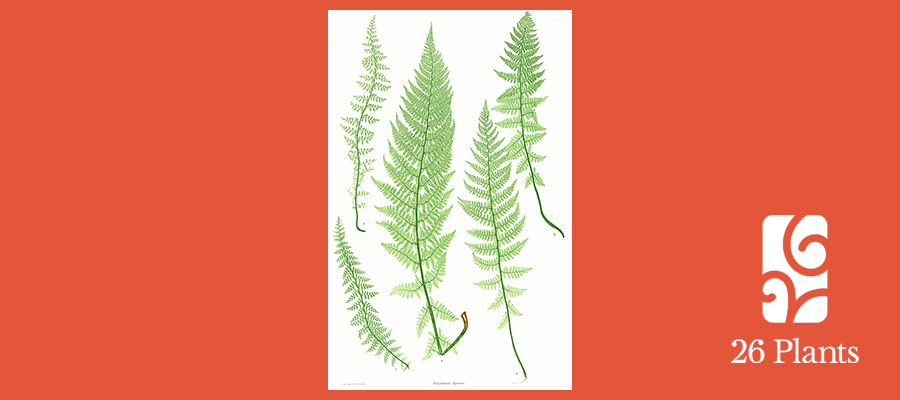Alpine Lady-Fern
Athyrium distentifolium
Lisa Farrell

Let her grow, Alpine Lady-Fern,
whose kin left their mark back in the Ice Age.
You’d think her infinite, but you can’t trust everything you read,
even if it is written in stone.
It’s her snow bed that saves her, so if the world warms beyond snow,
where then will she lie?
She cannot come down from the mountains;
her flowerless crown would mean nothing at low altitudes.
She’d be forever lost among common ferns,
and her feathery coat offers scant protection from rough,
herbivorous teeth.
Remember the nutritious and medicinal potential hidden in her fiddleheads,
and let her grow.
Ferns, as fossils show, have been around for an extremely long time, predating the dinosaurs. They grow everywhere from jungles to rice-paddies, and dry stone walls to arctic tundra. This might give the impression that they’re indestructible, immortal creatures, but of course different species have evolved to survive in different climes. In the UK, Alpine Lady-Fern exists only in the mountains of Scotland, and only where snow has lain for extended periods. Its reliance on this habitat makes it vulnerable to climate change. Already there’s evidence that reduced snow-cover in winter reduces the population of Alpine Lady-Ferns, so if the world continues to warm Scotland may lose this native species.
The Victorians delighted in the diversity of ferns. ‘Pteridomania’, the craze for ferns in the 1850s-90s, drove some species nearly to extinction. Ferns were kept in glass Wardian cases and grown in the dark, polluted atmosphere of Victorian houses in London, where they brought ‘simple elegance’ to fashionable drawing-rooms. Many amateur botanists and collectors were also fern hunters, gathering specimens from the wild. The Victorians not only wrote and bought books on ferns, but dried and pressed their fronds to preserve them, painted, catalogued and photographed them. Thomas Moore’s popular book Ferns of Great Britain and Ireland, published in 1855, included ‘nature-printed’ images of ferns created by Henry Bradbury.
Prior to the Victorians, ferns were considered magical plants, often associated with faeries or spirits. This may have partly been due to the fact that they don’t produce seeds, yet mysteriously spring to life. It was believed their seeds were invisible, and that gathering them on Midsummer’s Eve would render the finder invisible. This apparently accounts for the line in Henry IV, suggesting that when ‘We have the receipt of fern seed, we walk invisible’ (Part 1, Act 2, Scene 1). Ferns were also used for love charms or love divination, as cutting the stalk of a fern horizontally would reveal the initial of a future love.
In some countries, fern fiddleheads are commonly eaten, and they may also have been used for medicinal and culinary purposes in Britain in the past. A study published in 2021 investigated the beneficial properties of the fiddleheads of several ferns, including Alpine Lady-Fern. They were found to have more antioxidants, carotenoids and fatty acids than rocket or spinach. So it could be that ferns are a local, nutrient-dense food just waiting to be cultivated.
Image: Plate from 1857 edition of Thomas Moore’s The Ferns of Great Britain and Ireland, nature-printed by Henry Bradbury.
